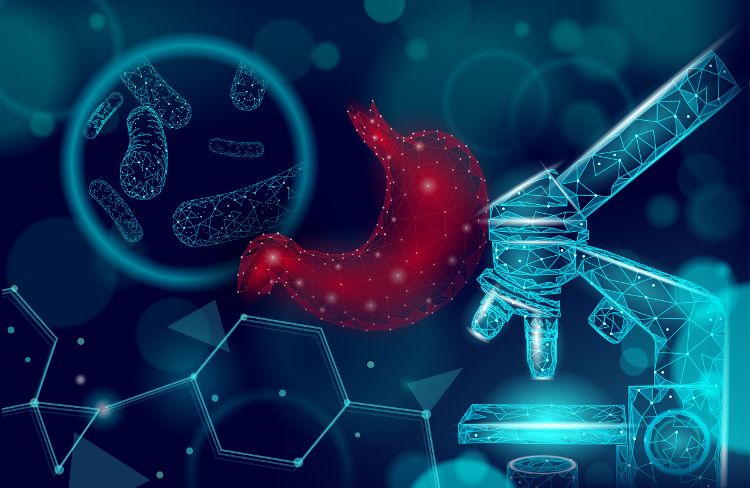Probiotics beyond digestion: New research frontiers
Examining the latest in probiotic research, from cholesterol management to respiratory health.
Photo Credit © Luckystep - Stock.adobe.com

Immune health is on a lot of people’s minds these days. “The immune system is one of the most complex in the body, and also one of the most important, as its prime function is to protect us against all kinds of infections-including viral,” says Sid Shastri, MSc, director of product development and marketing, Kaneka Probiotics (Newark, CA).
And while the immune system comprises everything from the thymus, tonsils, adenoids, and spleen to lymph glands and bone marrow, “scientists estimate that between 50% and 75% of all immune cells reside in the gastrointestinal tract as gut-associated lymphoid tissue, or GALT,” Shastri says. “So, it’s no understatement to claim that a healthy immune system emanates from a healthy gut.”
A healthy gut emanates, in part, from a healthy probiotic supplementation routine. But probiotics’ benefits go well beyond the gut, as well. And what we’re seeing these days is a renewed appreciation-and deeper understanding-of the benefits of probiotics.
Growth Medium
While consumers are hardly pinning their hopes on a supplement-based cure for the current COVID-19 pandemic-and no responsible party would suggest they do so-the pandemic reminds us that baseline health is tantamount to an insurance policy at times like this, and that what we take into our bodies can bolster and defend it against illness.
“As such, probiotic intake is becoming more prevalent,” says John Deaton, vice president of science and technology, Deerland Probiotics & Enzymes (Kennesaw, GA). “We’re seeing probiotics not only in supplements but increasingly in a variety of functional foods and beverages, from kombucha and hot chocolate to breakfast cereals and sports bars.”
The numbers back him up. Nutrition Business Journal reports “sizable 7% sales jumps in 2017 and 2018” for probiotic products, Deaton notes, and though growth evened out at a steady 2% in 2019, the calmer pace, Deaton surmises, is “likely because probiotics evolved from fad to must-have.”
Indeed, only 5% of supplement users included probiotics in their regimens in 2008, but that percentage had more than doubled to 13% by 2016, according to that year’s Council for Responsible Nutrition’s Consumer Survey on Dietary Supplements.
Mounting Evidence
It took probiotics to get to that point. While Elie Metchnikoff first observed the beneficial bacteria back in 1905, almost a century had passed before the International Scientific Association for Probiotics and Prebiotics arose in 2002, notes Shaheen Majeed, president worldwide, Sabinsa (East Windsor, NJ).
“Subsequent to that,” he continues, “the World Health Organization’s establishment of a probiotic definition then stimulated the rapid growth in research, clinical trials, and safety assessments we see now.”
And research really is mounting. “New discoveries are emerging at a fast pace,” Deerland’s Deaton says. His back-of-the-envelope PubMed search uncovered more than 27,000 papers published thus far, 13,017 of which dropped within the last five years and 3,770 of which arrived in 2019 alone. And with 1,091 papers going live in the first three months of 2020, he says, “That’s more than 12 papers per day!”
Firm Foundation
The research intensity reflects probiotics’ importance to “both human and animal health and wellbeing,” Deaton says. “And it’s incredibly important that this research be published through the process of rigorous peer review and made available for all, including research and data showing negative results.”
Category insiders agree. As Kaneka’s Shastri says, “Rigorous research isn’t just important for probiotics; it’s the essential foundation of the category.”
Jennifer Montgomery, regional probiotics marketing manager, DuPont Nutrition & Biosciences (Madison, WI), even believes that investment in clinical research is the industry standard, and a sign of a company’s seriousness.
“Probiotic research is increasingly being performed with rigor similar to what we see in medical research,” she adds. “Although probiotics’ aim is to support and maintain health, statements around this aim rightfully receive similar scrutiny as medical research. As a category, therefore, we must be confident that what we recommend is backed by sound data.”
Thankfully, much of it is. Bérengère Feuz, marketing director, Lallemand Health Solutions (Montreal), has noticed an encouraging maturation of clinical-study quality over the past 15 years, with protocols following best practices and researchers tapping into advanced technologies and multiple assessments, including microbiota analysis in stool samples, biomarker collection from saliva and blood, and the use of validated questionnaires to gauge symptom improvement objectively. “Clinical and mechanistic studies are essential to better understanding probiotics’ modes of action and benefits,” she says.
For his part, Sabinsa’s Majeed sees valid studies as having three core elements: “testing the health benefit in a randomized, controlled clinical trial in a heterogeneous population; the dose and viability of the probiotic used for study; and the genomic characterization of the probiotic strain.”
One Study Does Not Fit All
Matters of probiotic dose and strain repeatedly emerge as key to any study’s conclusions. As Shastri says, “Evidence points out again and again that probiotic properties and doses are strain-specific.” In other words, the efficacy and mechanisms of action attributable to one strain aren’t necessarily applicable to others.
“Moreover,” Shastri adds, “some studies show a plateau effect above a certain dose. Therefore, any health claims must be based on studies using the precise strains and doses being offered to consumers.”
Study results also depend on the subject populations involved, Deerland’s Deaton adds. “Although age populations in probiotic trials haven’t necessarily expanded,” he says, “it’s becoming clearer that a careful breakdown in age between children and adults is important in clarifying benefits.”
For example, a child’s microbiome has largely formed by age three; thus, many microbiome-related effects appear in cohorts younger than this, Deaton explains. By contrast, because the diversity of key microbiota species decreases with age, “supplementation with probiotics in this older cohort can yield specific immune benefits for this population.”
Adding to the specificity are studies that focus on probiotic effects in different gender and lifestyle cohorts, Deaton continues, “with distinct benefits seen among women and athletes.”
Beyond the Gut
And as previously mentioned, the scope of benefits under investigation has expanded well beyond those affecting the gut.
Notes DuPont’s Montgomery, “Though traditional endpoints of intestinal and immune health are still the main drivers, new areas, such as metabolic and mental health, are becoming increasingly important.”
Deaton cheers this development. “Research into novel areas where probiotics can provide support is acutely relevant in current times,” he says. “It’s now so universally accepted that maintaining a healthy gut has benefits for overall health that it’s driving more clinical research assessing on a strain-by-strain or defined multi-strain basis what probiotics can really do to support health in increasingly busy and hectic lives.”
Already, probiotics’ benefits with regard to infant colic, cardiovascular health, sports nutrition, healthy aging, skin condition, and urinary-tract and vaginal health enjoy wide support in the clinical literature. Adds Majeed, “Recent research on the microbiome’s influence on the production of hormones has expanded interest to neurological benefits, thus connecting the gut to brain health.”
Feuz considers this gut-brain axis “a very innovative and dynamic research area.” Meanwhile, she says, Lallemand’s in-house science watch found that only 30% of new clinical studies registered in 2019 investigated gut health, including research on irritable bowel syndrome, Helicobacter pylori, constipation, and infant colic. The next most-studied fields were metabolic syndrome, at 17%, and, at 12%, that dynamic axis between gut and brain.
New Frontiers
When asked to pick the probiotic research that’s captured their attention recently, category experts shared examples that covered the waterfront.
John Quilter, vice president and general manager, Kerry (Beloit, WI), points to “really interesting” research affirming probiotics’ role in gastrointestinal and upper-respiratory-tract health in children. The randomized, double-blind, placebo-controlled study1 found that supplementation with Kerry’s branded Ganeden BC30 Bacillus coagulans GBI-30, 6068, strain significantly reduced incidence of flatulence and suggested a positive effect on stool consistency.
“It also found a significant decrease in the incidence of URTI symptoms, including nasal congestion, bloody nasal mucus, itchy nose, and hoarseness, as well as the duration of hoarseness, headache, red eyes, and fatigue,” Quilter says. “Researchers reported that the strain may have the ability to modulate the immune response based on beneficial effects on URTI and GI symptoms.”
Montgomery points to a study that builds on earlier evidence linking DuPont’s Howaru Bifidobacterium lactis HN019 strain to reduced colonic transit time by examining the strain’s effects on bowel function in constipated subjects. Results show that the probiotic increased bowel-movement frequency in subjects with fewer than three such episodes per week-an increase that had yet to plateau after four weeks. “There is some mechanistic understanding here-reduced colonic transit and influence on intestinal motility-and the results show a biological effect,” Montgomery says, but a follow-up study of longer duration will help establish results further.2
Sabinsa scientists conducted a recent in vitro investigation into the cholesterol-lowering activity of its Bacillus coagulans MTCC 5856 strain (the company’s LactoSpore probiotic) and found significant cholesterol reductions of 48.4% in culture media, reducing the cholesterol levels of foods like egg yolk (39.79% reduction), chicken liver (45.44%), and butter (49.51%) when incubated for 24 hours in conditions mimicking the in vivo environment. “The strain also produced significant amounts of propionic acid and butyric acid while fermenting cholesterol-rich foods,” notes Majeed. “The results open up a new, previously undiscovered direction to explore-the idea that these bacteria could use cholesterol as a carbon source for growth is fascinating.”3
A randomized, double-blind, placebo-controlled crossover study confirmed that Lallemand’s Bacillus subtilis Rosell-179 and Bifidobacterium lactis LAFTI B94 strains deconjugated bile acids in overweight, but otherwise healthy, adults, Feuz notes. “The deconjugation of bile acids through microbial bile-salt hydrolase activity has previously been thought to be a regulator of bile acids and cholesterol in the host,” she says. “This study is of high interest as it further establishes the interrelationship between gut microbiota, probiotics, and metabolism, providing a robust scientific foundation for including probiotic formulations as part of an effective dietary-intervention strategy.”4
And Kaneka’s Shastri is intrigued by a new meta-analysis demonstrating that probiotic intervention significantly reduces the risk of overall infection in patients undergoing colorectal surgery for cancer. The probiotic intervention was not only associated with fewer infections at the surgical-incision site than was the placebo, he notes; it was associated with a diminished incidence of pneumonia, as well. “This clearly shows that probiotic administration had a positive effect beyond gut infections, as gut probiotics were capable of boosting the immune response in patients’ lungs,” he says. “The logical next step would be to start unravelling the molecular pathways involved, with the ultimate goal of screening for optimal probiotic strains based on their production of such molecules.”5
And in an as-yet-unpublished study, researchers looked at the effects of Deerland’s Bacillus subtilis DE111 strain at a dose of 1×109 CFU versus placebo in 91 children aged 2 to 6 who attended daycare. After eight weeks, results showed an apparent positive modulation in gut-microbiome profile without altering the overall microbiome equilibrium in children receiving the probiotic. Specifically, researchers saw increased alpha-diversity, suggesting increased functional diversity within the microbiome. The probiotic also increased levels of gut genera associated with immune regulation and reduced inflammation.
Results of both clinical trials, Deerland’s Deaton says, “support the diversity of probiotic benefits. Probiotics taken orally not only impact gut health and the gut microbiome, but have systemic benefits including mitigation of cardiovascular disease and support of immune health.”
Looking Ahead
We’ve come a long way from the days when good gut bugs were all about digestion.
“The advance of and easy access to research techniques measuring whole-microbiome and metabolomic shifts in study populations has created new possibilities for assessing efficacy and creating a deeper understanding of the potential mechanisms of action of many probiotic strains,” Deaton concludes. “As this knowledge grows, clinical-trial development becomes more targeted, in-depth, and inclusive of novel areas of health support.”
And that’s a positive sign of the times, as far as Shastri is concerned. “The human body’s different microbiomes have gone from being ‘useless bystanders’ to key players in so many aspects of health,” he says. “Such a paradigm change generates a lot of hype and hope that need to be turned into solid facts, and there’s no other way to do that than with rigorous research.”
References:
- Anaya-Loyola MA et al. “Bacillus coagulans GBI-30, 6068 decreases upper respiratory and gastrointestinal tract symptoms in healthy Mexican scholar-aged children by modulating immune related proteins.” Food Research International. Published online July 21, 2019.
- Ibarra A et al. “Effects of 28-day Bifidobacterium animalis subsp. lactis HN019 supplementation on colonic transit time and gastrointestinal symptoms in adults with functional constipation: A double-blind, randomized, placebo-controlled, and dose-ranging trial.” Gut Microbes, vol. 9, no. 3 (2018): 236-251
- Majeed M et al. “Evaluation of the in vitro cholesterol-lowering activity of the probiotic strain Bacillus coagulans MTCC 5856.” International Journal of Food Science and Technology, vol. 54, no. 1 (January 2019): 212–220
- Culpepper T et al. “Three probiotic strains exert different effects on plasma bile acid profiles in healthy obese adults: randomised, double-blind placebo-controlled crossover study.” Beneficial Microbes, vol. 10, no. 5 (May 28, 2019): 497-509
- Ouyang X et al. “Probiotics for preventing postoperative infection in colorectal cancer patients: a systematic review and meta-analysis.” International Journal of Colorectal Disease, vol. 34, no. 3 (March 2019): 459-469

HHS announces restructuring plans to consolidate divisions and downsize workforce
Published: March 27th 2025 | Updated: March 27th 2025According to the announcement, the restructuring will save taxpayers $1.8 billion per year by reducing the workforce by 10,000 full-time employees and consolidating the department’s 28 divisions into 15 new divisions.






















